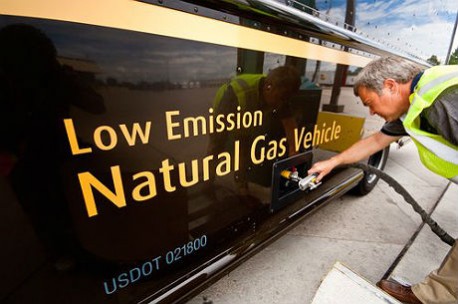So the U.S. has a 100-year supply of natural gas…
Now what?
Well, now come the important decisions.
I got a message over Thanksgiving break from a journalist at a national magazine. She was doing a story about transformative events in 2013, and wanted my input on natural gas. The message said:
One thing my editor wants me to check out is natural gas… will the U.S. pass any major milestone when it comes to natural gas? She has something written down about the U.S. passing Russia as the largest producer, but from what I’m seeing online it doesn’t look like that will happen until 2015.
So… I’m just wondering if you could tell me if natural gas is a big blip on the radar in 2013 or not. If it is, why?
I replied with a 500-word write-up of what’s important for natural gas next year. I’d like to share a modified version of it with you today…
Natural Gas in 2013
Natural gas is a huge deal this year — and will continue to be next year because of advances in hydraulic fracturing (fracking) that are allowing us to unlock reserves once thought off-limits.
As for outpacing Russia, we’ve actually gone back and forth over the past few years.
According to the Energy Information Administration: In 2011 Russia was the world’s largest dry natural gas producer (23.6 Tcf), regaining its status as the world top producer after trailing U.S. production in 2009 and 2010.
This year is still up in the air, but I’d venture a guess that we come out on top.
However, this isn’t really a “milestone.” It’s fun to make ranking lists, but that really gives no insight.
Russia has way more reserves than we do (about 6x as many).

And they also waste a lot more by flaring it off during oil production. They have so much, they literally burn it off as waste.
They waste more gas in this fashion than any other country by far:

We could go back and forth for years as the world’s top “producer,” but ultimately Russia has a lot more — and will start producing more once they gain more knowledge on fracking.
I think the real natural gas “milestone” in 2013 will be what the U.S. collectively decides to do with its newfound gas wealth.
Some say we should export it, and several companies (see them all here) have already asked the government for permission to do so. The answers to these requests will be pivotal for the entire country because it presents a crossroads…
Do we hoard our gas to benefit all U.S. citizens by not having to import any and allowing prices to remain near decade lows (I’m expecting a $3-$5/mmBtu range for a few years)?

Or do we do the pure capitalism thing and send it wherever it fetches the highest price, i.e. Asia?
The answers to these questions are the real story of 2013.
From my view, it seems silly to have sought energy independence for so long… to be right on the verge of it… and to squander it away so a few companies can sell gas at higher Asian prices.
I’d like to keep all that gas here: let the price stay low, which will benefit small businesses in the form of low energy/utility costs.
Ask yourself this: We’ve imported $100 oil for years… Why should we export $3.00 natural gas?
With prices that low, you’ll see more cars (especially big rigs, fleets, and buses) in the U.S. start running on natural gas.
Natural gas prices between $2.00 and $4.00 translates into $0.25 to $0.50 per gallon of gasoline equivalent (GGE). Even with $1.75 refining cost, that still translates to $2.00 to $2.25 for a gallon. I’ve been paying more than that for over five years.
I’ve been paying more than that for over five years.
That’s why more than 50% of the trash trucks sold this year will be powered by natural gas. I saw that the new Dodge Ram is offered in a natural gas version as well.
It makes perfect sense for anyone with a fleet: utilities, postal services, or businesses that have delivery vehicles. Because the cost-per-gallon equivalent is much cheaper and it’s a domestic energy source.
Across the U.S., companies are racing to create the infrastructure necessary to start relying more heavily on natural gas for many needs: rigs, gas-to-liquid plants, pumping stations, pipelines, engines, and more.
It’s creating a ring of wealth from coast to coast.
Clean Energy Fuels (NASDAQ: CLNE) is building “America’s Natural Gas Highway” — 150 LNG fueling stations in two years. Shell (NYSE: RDS) is building an additional 100.
It’s time to start preparing to profit from this transition now.
{$custom_nat_gas2}
If we play it right, we’ll be using cheap natural gas to power the country and our portfolios.
Call it like you see it,

Nick Hodge
Nick is the founder and president of the Outsider Club, and the investment director of the thousands-strong stock advisories, Early Advantage and Wall Street’s Underground Profits. He also heads Nick’s Notebook, a private placement and alert service that has raised tens of millions of dollars of investment capital for resource, energy, cannabis, and medical technology companies. Co-author of two best-selling investment books, including Energy Investing for Dummies, his insights have been shared on news programs and in magazines and newspapers around the world. For more on Nick, take a look at his editor’s page.

 @nickchodge on Twitter
@nickchodge on Twitter